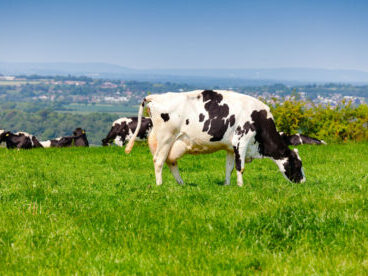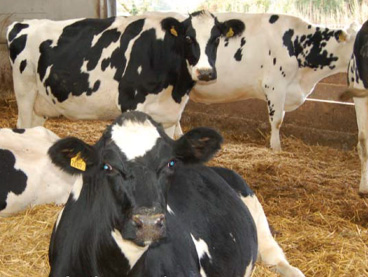Spending a few minutes looking critically at your cows and using Cow Signals can tell you a lot about the diet.
What can your cows tell you about the diet?
Spending a few minutes looking critically at your cows and using Cow Signals can tell you a lot about the diet, its presentation and availability and how cows are using it, as UFAC’s Mike Chown a Cow Signal Trainer and Advisor explains.
If we want to know how well the diet is working and how well cows are using it we need to focus on the rumen. The rumen is nearly one third of the size of a cow and provides roughly two thirds of her daily energy and protein requirements. It is a 24 hour mixing machine designed to optimise fermentation and absorption so we need to keep it working effectively. Quite simply, it the rumen is OK, the cow will be OK and vice versa.
The objective is to get cows to maximise dry matter intakes. This requires stress free access to quality, palatable, accurately mixed feed and water, without cows eating too fast or selectively feeding. Work on a minimum of 70cm feed space/cow.
Ideally a cow should eat 10-14 equal meals per day, with each visit roughly half an hour long, consuming 2 – 2 .2kgDM/visit and you should expect to see around a third of animals at the feed space chewing. There are five things to look at to assess rumen performance:
Rumen fill score – an indication of how well she ate in the last six hours. Ideally we are looking for an average rumen score of 3.5 – 4.0.
Belly fill – a guide to how she has been eating over the last week. Standing two metres directly behind the cow, can you see the belly bulging out on both sides? If you can, then intakes have been good. If you can’t, then intakes may have been suppressed.
Body Condition Score – a good indicator to DMI in the last month. This is very important in early lactation as we need to minimise weight loss so cows remain healthy and conceive. We should look for a BCS of 2.5-3.0.
Rumination rate – you are looking for 7 out of 10 lying cows cudding with moisture on their lower jaw and chewing 55-70 chews/ cud ball. Less than this is an indication of low effective fibre levels, which can have a negative impact on butter fat production. To be effective, the ration should ideally contain a minimum 8% of fibre 15 -20cm in length and it must be less than the width of the muzzle. Effective fibre length also helps reduce sorting.
Manure scoring – look at the 3C’s – Colour, Consistency and Content. Hear it, see it, feel it, smell it, squeeze it! Do the boot test.
Is it standing 3-4 cm high and does it hold the tread of your boots when you lightly stand on it. If it doesn’t, it is possible we have SARA or excessive hind gut fermentation in the herd, especially if manure contains mucus. Then sieve it. Are there more than 33% undigested particles?
If there, are it means we have a poorly balanced ration and the rumen is not at optimum performance. Armed with this information you will have a good picture of the health of the rumen and cows, which in turn will suggest how effective your diet is, allowing you to assess the diet to obtain a Feed Conversion Efficiency over 1.5 kg milk/kg DMI.


 Back to News
Back to News 



